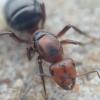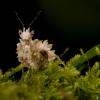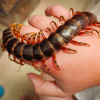I'm planning on starting a C. pennsylvanicus colony when their flights roll around this year, but I have a question about founding them. The standard test tubes seem a little small; whenever I put a C. pennsylvanicus queen in, I can see her struggling to turn around. Is this bad? Because I've seen many experienced antkeepers house them in standard test tubes, but I've seen mine struggling. Thanks!
Edited by Mettcollsuss, October 25 2017 - 2:50 AM.
























